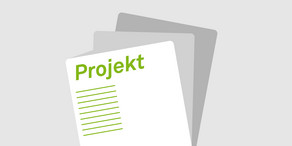MAKE-IT – Understanding Collective Awareness Platforms with the Maker Movement
Research area Innovation and education in the digital society | Dr. habil. Bastian Pelka | Marthe Zirngiebl
MAKE-IT studies how Collective Awareness Platforms (CAPs) support and stimulate maker communities and the impacts this is having and is likely to have in the future across society.
European Union - Horizon 2020
The MAKE-IT project investigates to what extent "Collective Awareness Platforms" for sustainability and social innovation (CAPs) influence the development and governance of the Maker movement. "Collective awareness platforms for sustainability and social innovation" (CAPS) are ICT platforms that drive the interconnection of various social media, as well as knowledge and data from real-world environments (such as the "Internet of Things"). The goal of these platforms is to create awareness of social problems and possible collective approaches to solving them. In the process, new forms of social innovation will be created. Furthermore, it will be illuminated how these two movements can benefit from each other. On the one hand, this will provide further insights into the phenomenon of the Maker movement. On the other hand, a better understanding of the diverse applications and influences of CAPs in different contexts is aimed at. To achieve this research goal, MAKE-IT follows a multidisciplinary research approach (this includes behavioral studies, social psychology, sociology, economics, environmental sciences, technology studies, among others).
In doing so, the role of CAPs is examined from the following perspectives:
- What does the organization and governance of Maker communities look like?
- What do Makers do and how do they behave in these communities?
- What social impact and value is created?
- TNO - Netherlands Organisation for Applied Scientific Research (Netherlands)
- DTI - Danish Technological Institute (Denmark)ZSI - Zentrum für Soziale Innovation / Centre for Social Innovation Vienna (Austria)
- TUDO/sfs - Technical University Dortmund Social Research Center (Germany)
- IAAC - FabLab Barcelona, The Institute for Advanced Architecture of Catalonia (Spain)
- FLZ - FabLab Zagreb (Croatia)
- HLW - Happylab Gmbh Vienna (Austria)
- AHHAA - Science Centra AHHAA (Estonia)
- CIR - Create it Real ApS (Denmark)
The MAKE-IT project aims to gain a better understanding of how Collective Awareness Platforms (CAPs) have influenced the growing popularity of the Maker movement. Furthermore, it will be investigated to what extent the Maker movement makes use of CAPs to promote social innovation and sustainability.
The specific objective of MAKE-IT is to ...
- Extend the CAPs approach into a new domain: The MAKE-IT project extends the CAPs approach to include the perspective of collaborative production of physical objects. So far, the CAPs approach has primarily encompassed the collaborative generation of knowledge and abstract entities.
- Conduct multidisciplinary research related to the role and impact of CAPs on the Maker movement.
- To conduct action research. The goal here is to take the newly gained knowledge back to the Maker and CAPs communities.
- To contribute to the further development of Maker awareness and Maker culture. This is to be seen as part of a far-reaching technology shift and socio-economically sustainable growth. MAKE-IT's contribution is made, on the one hand, through an improved understanding of socio-economic changes and challenges. On the other hand, MAKE-IT uncovers underlying, technological factors that play a significant role in determining future trends, challenges and opportunities.
Building on phase one, in which the theoretical basis is first developed, the second phase of MAKE-IT will take a closer look at individual maker communities in a participatory process using a case study and action research design. First, the case studies will focus on the characteristics of individual maker communities. Then, in the action research approach, different communities are brought together to test new forms of cooperation within the MAKE-IT platform.




![[Translate to English:] [Translate to English:]](/storages/zentraler_bilderpool/_processed_/a/f/csm_Kontakt_b86e8d8ecc.png)
![[Translate to English:] [Translate to English:]](/storages/sfs-sowi/_processed_/6/c/csm_Glasfront_sfs_Header_eae6d325d3.jpg)
